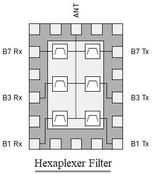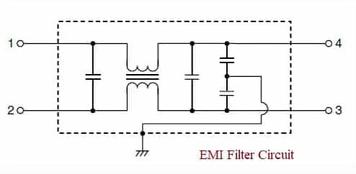
Doherty Amplifier: Advantages and Disadvantages
Explore the benefits and drawbacks of Doherty amplifier architecture, including power efficiency, complexity, and application suitability.
Advertisement

Explore the benefits and drawbacks of Doherty amplifier architecture, including power efficiency, complexity, and application suitability.

Explore the structure, operation, benefits, and drawbacks of Double Heterojunction (DH) LEDs. Learn about their higher efficiency and applications.

Explore the advantages and disadvantages of Dual Gate MOSFETs, including their applications in RF circuits and key features like improved electrostatic control.

Explore the distinctions between dual junction isolators and circulators, focusing on their enhanced isolation and applications in protecting sensitive equipment.

A comparison of duplexers, quadplexers, hexaplexers, and pentaplexers, highlighting their functions as multiplexers/de-multiplexers in RF systems.

Explore the advantages and disadvantages of RF duplexers. Learn how they allow simultaneous transmission and reception using a single antenna in various wireless systems.

Explore the pros and cons of dynamic microphones (moving coil mics), including their affordability, durability, and sound coloring, as well as limitations in high-frequency response and sensitivity.
Explore the pros and cons of Emitter Coupled Logic (ECL), highlighting its speed, noise immunity, and power consumption compared to TTL and CMOS.

Explore the differences between ECL, PECL, and LVPECL logic families, covering their characteristics, advantages, and disadvantages for high-speed applications.
Explore the key differences between Electric Double-Layer Capacitors (EDLCs) and traditional capacitors in terms of energy storage, power density, cycle life, and applications.

Explore the differences between eFuses and PTC fuses for overcurrent protection, covering their operation, types, and performance characteristics.

Explore the advantages and disadvantages of eFuses (electronic fuses), including benefits like board space savings and drawbacks like complex construction.
Explore the pros and cons of electrically conductive adhesives (ECAs) as an alternative to traditional soldering in electronics manufacturing.
Compare electro-mechanical and solid-state RF switches. Explore differences in speed, power, isolation, and other key parameters.

Learn about aluminum electrolytic capacitors, their polarity requirements, and the consequences of reverse biasing, including potential failure modes.
Explore biconical, broadband, and log periodic antennas for detecting electromagnetic interference (EMI). Learn about their features and applications in EMI/EMC testing.

Learn about EMI filter circuits, their design principles, working operation, applications, and the components used to suppress electromagnetic interference.

Explore Emitter Coupled Logic (ECL) circuits: their key characteristics, implementation using bipolar junction transistors (BJTs), and examples of ECL inverter, NAND, and NOR gates.

Explore the Esaki diode (tunnel diode): its negative resistance, quantum tunneling principle, I-V curve, applications in oscillators, mixers, and more.

Learn about ESD protection diodes, their function in protecting circuits from electrostatic discharge, key characteristics like avalanche voltage and low capacitance, and major vendors.
Advertisement